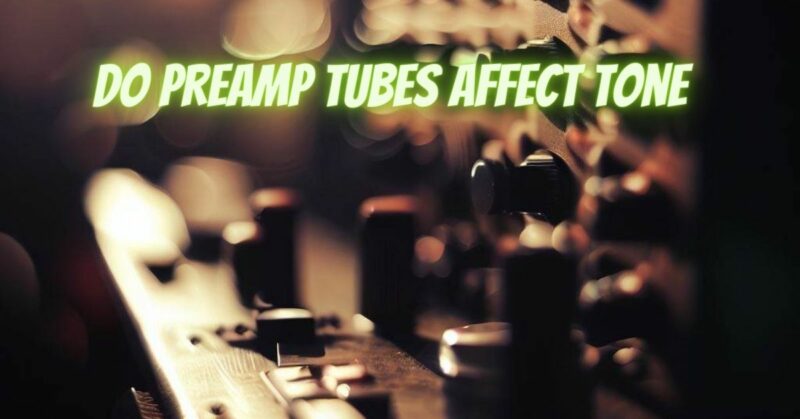Preamp tubes, also known as small signal tubes, are integral components in guitar amplifiers and high-fidelity audio systems. They handle the initial amplification stages, where weak audio signals are transformed into stronger signals before reaching the power amplifier stage. While power tubes have a significant impact on volume and overall power, the role of preamp tubes in shaping tone and sound character is often a subject of discussion among audiophiles and musicians. This article delves into the influence of preamp tubes on tone, exploring their role in sound shaping and overall audio character.
Preamp Tubes: The Sound Shapers
Preamp tubes are responsible for the first stages of amplification, where they take the weak audio signals and boost them to a level suitable for further processing. During this process, preamp tubes can introduce subtle tonal coloration and harmonic richness that contribute to the amplifier’s unique sound signature.
- Gain Staging: Preamp tubes determine the amount of gain applied to the incoming audio signal. Different preamp tubes have distinct gain characteristics, affecting how much the signal is amplified at each stage. Tubes with higher gain might result in a more aggressive and overdriven sound, while lower gain tubes can produce cleaner, more pristine tones.
- Harmonic Content: Preamp tubes can add harmonics to the audio signal during amplification. Even-order harmonics, such as second and fourth harmonics, are considered pleasant and contribute to warm and rich tones. Odd-order harmonics, like third and fifth harmonics, can introduce complexity and color to the sound. The mix of harmonics varies depending on the specific preamp tube types and circuit design, influencing the overall tonal character of the amplifier.
- Frequency Response: Different preamp tubes can have subtle variations in their frequency response, affecting how they accentuate or attenuate specific frequency ranges. These variations contribute to the overall tonal balance and timbre of the amplifier.
- Distortion Characteristics: Preamp tubes can influence the type and nature of distortion produced when pushed beyond their normal operating range. Some tubes create smooth and creamy overdrive, while others might exhibit more aggressive and edgy distortion characteristics.
Customizing Sound with Preamp Tubes
The impact of preamp tubes on tone allows musicians and audiophiles to customize the sound of their amplifier or audio system according to their preferences and musical style. By swapping different preamp tubes, users can achieve various sonic outcomes:
- Cleaner and Transparent Sound: Low-gain preamp tubes and tubes with more linear frequency responses can produce clean and transparent sounds, ideal for pristine and uncolored audio reproduction.
- Vintage Warmth and Character: Certain preamp tubes, such as classic 12AX7 or 12AU7 tubes, are known for their vintage warmth and musicality, adding a pleasing coloration to the sound.
- Aggressive Overdrive: High-gain preamp tubes, like 12AT7 or 12AX7 variants with modified circuits, can push an amplifier into aggressive overdrive territory, suitable for rock and heavy music genres.
In conclusion, preamp tubes play a crucial role in shaping the tone and sound character of audio systems and guitar amplifiers. Their impact extends beyond mere amplification, as they contribute to gain staging, harmonic content, frequency response, and distortion characteristics. By selecting preamp tubes with specific characteristics, musicians and audiophiles can achieve a wide range of sonic outcomes, tailoring the sound to suit their musical preferences and performance needs. As such, preamp tubes are valuable tools for sound shaping, enhancing the listening experience and allowing users to unlock the full potential of their amplifier or audio system.


